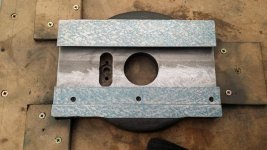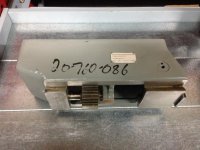I'm quite green, so please be kind. I'm planning on building an attachment to go onto the horizontal ways of a Deckel FP1 milling machine. The ways has two parallel dovetails. The attachment will be ductile iron sand cast and I'll be creating the dovetail in two steps:
- machine the dovetail
- manually get it super flat
There are two parallel dovetails, each roughly 12" in length, dovetails are 0.5" inset at 90 degrees.
I have only a milling machine (Deckel FP1, very accurate), no surface grinder. I have no experience doing the above and no experience scraping, etc.
My question: is it realistic to mill the dovetail, and then move directly to hand honing to get a flat surface (or is this even necessary?), and then finally moving to scraping? e.g. can I get the dovetails sufficiently flat on the mill to not need a surface grinder?
- machine the dovetail
- manually get it super flat
There are two parallel dovetails, each roughly 12" in length, dovetails are 0.5" inset at 90 degrees.
I have only a milling machine (Deckel FP1, very accurate), no surface grinder. I have no experience doing the above and no experience scraping, etc.
My question: is it realistic to mill the dovetail, and then move directly to hand honing to get a flat surface (or is this even necessary?), and then finally moving to scraping? e.g. can I get the dovetails sufficiently flat on the mill to not need a surface grinder?











